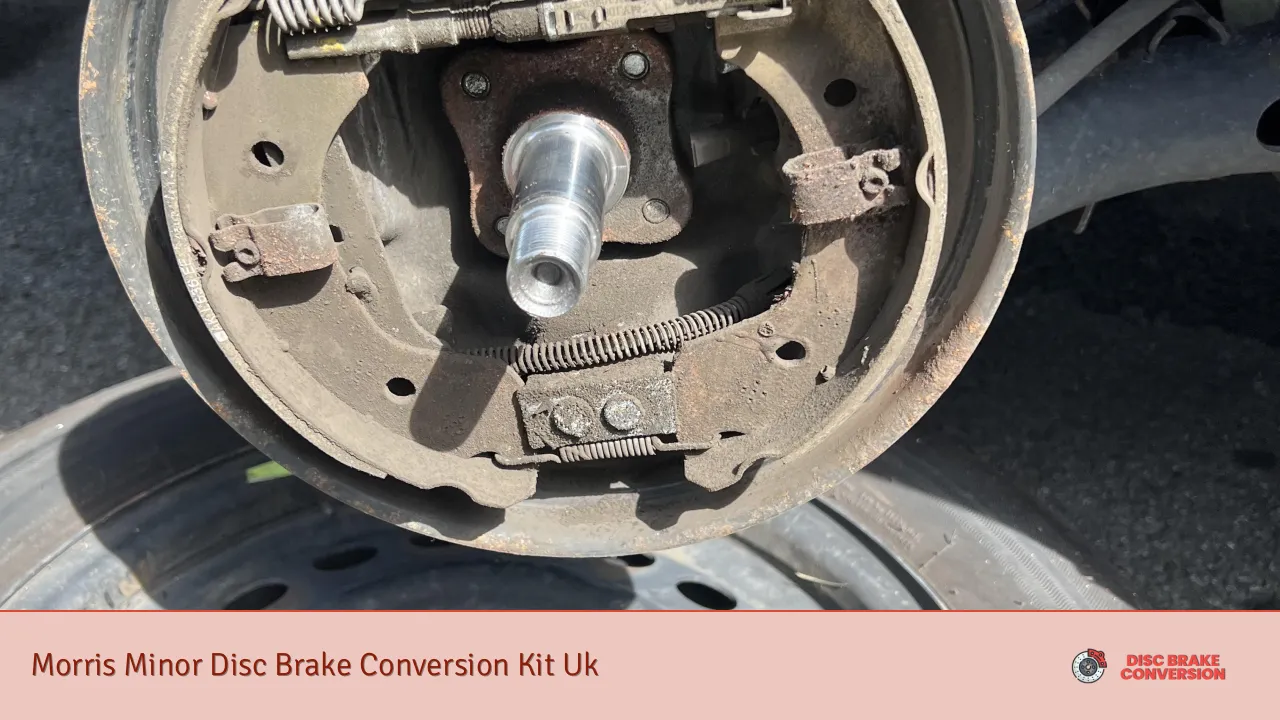Are you curious about the difference between drum brakes and disc brakes? Well, you’ve come to the right place! In this article, we’ll explore these two braking systems, their unique characteristics, and how they impact your driving experience. So let’s dive in and uncover the dissimilarities between drum brakes and disc brakes.
Drum brakes, resembling a drum-like shape, have been around for quite some time. They consist of brake shoes, brake drums, and various springs and levers. When you apply the brake pedal, hydraulic pressure forces the brake shoes to expand, pressing against the inner surface of the brake drum, resulting in friction that slows down the vehicle. Drum brakes are commonly found on the rear wheels of many older vehicles, as well as some entry-level models today.
On the other hand, disc brakes offer a different approach to stopping your vehicle. They consist of a rotor, caliper, and brake pads. When you engage the brakes, hydraulic pressure causes the caliper to squeeze the brake pads onto the rotor, generating friction that slows down the car. Disc brakes are often used on the front wheels of modern vehicles, and some high-performance cars even feature them on all four wheels. Their design allows for better heat dissipation, reducing the risk of brake fade during intense braking situations.
So what sets these two braking systems apart? One key difference lies in their performance under demanding conditions. Disc brakes tend to provide more efficient and consistent braking, especially when subjected to high temperatures. This is due to their open design, which allows heat to dissipate quickly. On the other hand, drum brakes are more susceptible to overheating since they are enclosed within the drum, which limits heat dissipation.
Another notable distinction is their maintenance requirements. Drum brakes are generally less complex and easier to service, making them more cost-effective in terms of routine maintenance. However, when it comes to replacing worn-out brake components, disc brakes are often simpler and quicker to replace.
To summarize, drum brakes and disc brakes have their own strengths and weaknesses. While drum brakes are simpler and cost-effective to maintain, disc brakes offer superior performance and improved heat dissipation. The type of braking system used in a vehicle depends on various factors, such as the intended use, budget, and manufacturer preferences. Understanding these differences can help you make informed decisions when it comes to your vehicle’s braking system.
Revolutionizing Braking Systems: Exploring the Pros and Cons of Drum Brakes vs. Disc Brakes
When it comes to automotive braking systems, two types have been at the forefront of innovation: drum brakes and disc brakes. Both these systems play a crucial role in ensuring vehicle safety but differ significantly in their design and performance. In this article, we will delve into the pros and cons of drum brakes and disc brakes, shedding light on their unique features and helping you understand which option might suit your needs best.
Let’s start with drum brakes, the older of the two technologies. Just like their name suggests, drum brakes consist of a drum-shaped housing that encloses brake shoes. When you apply the brakes, hydraulic pressure forces the brake shoes to expand against the inner surface of the drum, generating friction and slowing down the vehicle. One of the advantages of drum brakes is their ability to handle high loads effectively, making them suitable for heavy-duty vehicles. Additionally, they are less susceptible to water and debris, making them reliable in adverse conditions.
On the other hand, disc brakes have gained popularity in recent years due to their superior performance. Instead of using a drum-like housing, disc brakes employ a rotor and caliper setup. When you press the brake pedal, hydraulic pressure activates the caliper, which clamps brake pads onto the rotor, creating friction that decelerates the vehicle. Disc brakes offer excellent stopping power and dissipate heat more efficiently than drum brakes, reducing the risk of brake fade during prolonged or intense braking. Moreover, they are generally easier to service and provide better modulation, allowing for precise control over braking force.
While disc brakes come with significant advantages, drum brakes have their merits as well. Drum brakes tend to be more cost-effective and simpler in design, leading to ease of maintenance and lower initial costs. Moreover, they generate less noise than disc brakes, offering a quieter ride experience. However, drum brakes are prone to overheating, as they are less efficient at dissipating heat compared to their disc counterparts. This limitation can affect braking performance during intense or repeated braking scenarios.
Both drum brakes and disc brakes have their own set of pros and cons. Drum brakes excel in handling heavy loads and are more cost-effective, while disc brakes offer superior performance, better heat dissipation, and increased control over braking force. When choosing between the two, it’s essential to consider your vehicle’s requirements, driving conditions, and personal preferences. Consulting with a professional mechanic or automotive expert can provide valuable insights to help you make an informed decision.
Decoding the Mechanics: Unraveling the Key Differences Between Drum and Disc Brakes
When it comes to braking systems, understanding the key differences between drum and disc brakes is crucial. Whether you’re a car enthusiast or just someone who wants to know more about how your vehicle functions, this article will shed light on these two popular braking mechanisms.
Let’s tackle drum brakes first. Picture a snare drum, with its cylindrical shape and the ability to generate sound by applying pressure to both sides of the drumhead. Drum brakes work in a similar way. They consist of a hollow drum-like structure attached to the wheel. Inside the drum are brake shoes equipped with friction linings that press against the inside surface when the brakes are applied.


In contrast, disc brakes resemble miniature UFOs mounted directly on the wheels. Instead of using drums, they employ flat, circular discs that rotate alongside the wheels. These discs, also known as rotors, are gripped by calipers fitted with brake pads. When you step on the brake pedal, hydraulic pressure forces the brake pads to clamp down on the rotating disc, generating friction that slows down the vehicle.
So, what sets these two braking systems apart? Let’s find out. Firstly, drum brakes are generally bulkier and heavier compared to their disc counterparts. This extra weight can affect fuel efficiency and overall performance. However, drum brakes do have one advantage—they are better equipped to handle heat dissipation due to their enclosed structure, making them more suitable for heavy-duty applications like trucks.
On the other hand, disc brakes excel in terms of cooling efficiency. The open design allows air to flow freely around the rotor, dissipating heat more effectively. This feature makes disc brakes less prone to overheating during intense braking situations, such as sudden stops or driving downhill for prolonged periods.
Moreover, disc brakes offer superior stopping power and responsiveness. They provide consistent performance even under demanding conditions, thanks to their ability to quickly shed heat and maintain optimal friction levels. This advantage makes them a preferred choice for high-performance vehicles or those regularly tackling hilly terrains.
While both drum and disc brakes serve the same purpose of stopping a vehicle, they differ significantly in their design and performance characteristics. Drum brakes are sturdy and reliable but may lack the cooling capabilities and responsiveness of disc brakes. On the other hand, disc brakes offer enhanced performance, cooling efficiency, and overall stopping power. By understanding these key differences, you can make an informed decision when it comes to selecting the right braking system for your vehicle.
Braking Evolution: How Disc Brakes Are Changing the Automotive Landscape
When it comes to automotive advancements, one area that has seen remarkable progress is braking technology. Gone are the days of traditional drum brakes dominating the scene. Today, disc brakes have revolutionized the automotive landscape, offering superior performance and safety.
So, what makes disc brakes so special? Let’s take a closer look at their evolution and the impact they have had on the automotive industry.
Unlike drum brakes, which rely on friction between brake shoes and a rotating drum, disc brakes employ calipers that clamp down on a rotor. This design enables more efficient heat dissipation, resulting in better overall braking performance. Whether it’s sudden stops or prolonged braking, disc brakes provide unmatched stopping power, allowing drivers to maintain control even in emergency situations.
Moreover, disc brakes offer enhanced durability compared to drum brakes. The open design of the rotor prevents heat buildup, reducing the risk of brake fade and ensuring consistent performance over time. This longevity translates into lower maintenance costs for vehicle owners, making disc brakes a cost-effective choice in the long run.
Another advantage of disc brakes lies in their ability to quickly dissipate water and debris. The open design allows water to be expelled easily, minimizing the risk of hydroplaning and maintaining optimal braking performance even in wet conditions. Additionally, the exposed rotor helps prevent the accumulation of dirt and dust, further enhancing braking efficiency.
The adoption of disc brakes has not been limited to high-end or sports cars. In recent years, they have become increasingly common in mainstream vehicles. Manufacturers recognize the importance of safety and performance, and disc brakes have become a standard feature across many models. This shift has led to improved driving experiences for everyday commuters as well.
The emergence of disc brakes has revolutionized the automotive industry. Their superior performance, durability, and safety features have made them a game-changer. As more vehicles adopt this technology, drivers can enjoy enhanced braking capabilities and peace of mind on the road. With disc brakes leading the way, the future of braking looks bright, promising even more exciting innovations to come.
Safety Showdown: Comparing the Stopping Power of Drum Brakes and Disc Brakes
When it comes to ensuring safety on the road, one crucial aspect that demands our attention is the braking system of a vehicle. The stopping power of a car can make all the difference in preventing accidents and keeping everyone safe. In this safety showdown, we’ll compare the two primary types of braking systems: drum brakes and disc brakes.

Let’s start with drum brakes. Picture a drum-like component situated inside the wheel. When you press the brake pedal, a set of curved brake shoes is forced against the inner surface of the drum, generating friction that slows down or stops the rotation of the wheel. Drum brakes have been around for a long time and are commonly found in older vehicles and the rear wheels of some modern cars. They are reliable and less expensive to manufacture, making them a popular choice in certain applications. However, they have their limitations.
Now, let’s shift our focus to disc brakes, which are becoming increasingly prevalent in modern vehicles. Instead of a drum, disc brakes utilize a disc or rotor attached to the wheel. When you apply the brakes, a caliper housing contains brake pads that squeeze against the rotor, creating friction and causing the wheel to slow down or come to a halt. One notable advantage of disc brakes is their superior heat dissipation capability. This means they perform better under demanding conditions, such as frequent braking or driving downhill for extended periods.
In terms of stopping power, disc brakes tend to outperform drum brakes. They provide more consistent and efficient braking performance, especially in emergency situations. Disc brakes are also known for their responsiveness and ability to bring the vehicle to a stop more quickly. This feature can be critical when you need to avoid an unexpected obstacle or navigate through heavy traffic.
Nevertheless, drum brakes still have their place in certain scenarios. For instance, they are generally less susceptible to water and debris contamination, making them suitable for off-road vehicles or those used in harsh environments. Additionally, drum brakes often come at a lower cost, making them an economical option for vehicles that don’t require frequent or heavy braking.
While both drum brakes and disc brakes serve the purpose of stopping a vehicle, disc brakes offer superior stopping power and responsiveness. Their ability to dissipate heat effectively and provide consistent braking performance make them a preferred choice in modern cars. However, drum brakes still have their advantages in specific circumstances. Ultimately, it’s essential to consider the specific requirements of your vehicle and driving conditions to determine which braking system is best suited for you.

